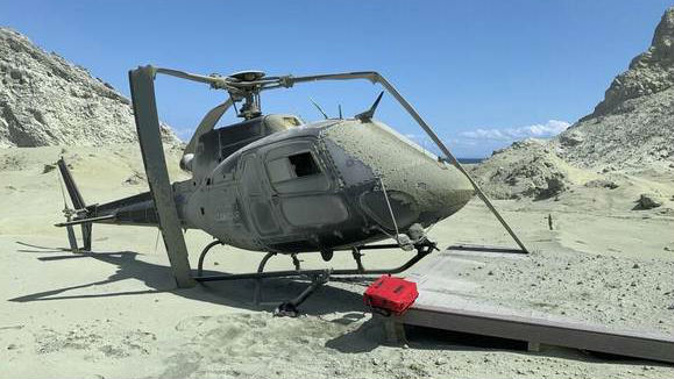
DISTRESSING CONTENT WARNING
An emergency doctor treating burn patients injured in the Whakaari/White Island eruption has described horrific scenes at Waikato Hospital.
"It's one of the most challenging things to look at because you know the patients are in so much pain and will be fighting for their life for the next two or three weeks and even then they could die," John Bonning, president of the Australasian College for Emergency Medicine, told the Herald.
His comments come as New Zealand authorities import 120 square metres of skin from the United States and Australia to help treat the victims' terrible burn injuries.
The amount of skin needed equates to about 60 donors - in New Zealand only five to 10 people donate skin each year.
As surgeons continue to work around the clock, 29 patients remain under intensive hospital care at New Zealand's four burns unit at Middlemore, Waikato, Hutt Valley and Christchurch. One other patient was transferred from Wellington to Australia tonight.
Bonning said as he wheeled patients into Waikato Hospital after Monday's eruption he could smell the sulphur coming from their clothing and saw "bits of dead skin" and "broken ash" peeling off their bodies.
"It was awful, just horrific. Saying it was like a war zone would not be an understatement."
Stuff reported staff being sent out to get cling wrap to cover the burns.
Bonning said this was good temporary cover to help relieve pain and prevent infection.
Australian Prime Minister Scott Morrison issued a statement tonight saying his government had activated a repatriation plan for Australian victims caught up in the eruption.
/arc-anglerfish-syd-prod-nzme.s3.amazonaws.com/public/BZTDB4VN4ZFODH6V7JLUYVGUCE.jpg)
Australian air force personnel prepare equipment on board a C-130J Hercules ahead of a mission to repatriate Australians injured in the White Island eruption. Photo / Supplied
Ten of the injured patients would be transferred to Victoria and New South Wales within 24 hours.
"Our focus, and that of the New Zealand Government, is on providing the best, most immediate clinical care for those in need.
"Our hearts go out to all the Australians and their families caught up in this tragedy, and our Kiwi cousins across the Tasman."
Thee Royal Australian Air Force aircraft had been deployed to New Zealand as part of the repatriation effort.
Middlemore Hospital's emergency department clinical director Dr Vanessa Thornton said two patients had suffered burns covering 90 per cent of their bodies.
"We are hoping they will survive and we are doing all we can to treat them," Thornton said.
All patients had more than 30 per cent burns and 22 still required airway support.
A skin donation - which can be stored in a freezer for up to five years - is used as dressing to help patients stay infection free and improve their outcomes until they are well enough to have skin grafts taken from their own body, chief medical officer at New Zealand Blood Service, Sarah Morley, told the Herald.
She said New Zealand sourced skin donations from the US regularly but in the last few days had required additional support due to those injured in the eruption.
"We believe that we have identified enough skin to look after the patients as far as the surgeons can predict for the next few weeks for those urgent requirements.
"Certainly the surgeons might come back to us more depending on how the patients are doing and we will continue to maintain our stock to as high a number as we can," Morley said.
The skin - which is kept in storage of -70 degrees - is being transported to New Zealand in special frozen storage.
The skin from Australia will arrive within 12 to 24 hours and from the US between 24 to 36 hours from the time of order.
The demand for blood and plasma had also increased dramatically since the eruption and that was being managed, Morley said.
"There is no shortage of blood and plasma," she said.
Plastic surgeon and director of the Victorian Adults Burns Service, Heather Cleland, said the biggest challenges for treating severe burns was fluid loss, resuscitation and protection of the airways.
"Once fluid loss occurs the blood pressure starts to drop and the person will go into shock so resuscitation and inserting [an] intravenous line is crucial to avoid organ failure.
"The other issue is inhalation and protection of the airway which can block off, creating a very dangerous situation. People often require a tube to be put down into their lungs to keep the airway open and so the patient can still breathe basically," Cleland said.
The severity of burns are measured by the percentage of coverage on the body.
"In an adult 20 per cent burns equates to about two arms, that's when you start to get all those general effects on the body - your immune system weakens, your heart doesn't work too well, and you can go into shock," Cleland said.
"It's not unheard of for a patient with 80 per cent burns to survive."
Anyone wanting to donate can visit the New Zealand Blood Service website or pop into one of the centres.
Take your Radio, Podcasts and Music with you









